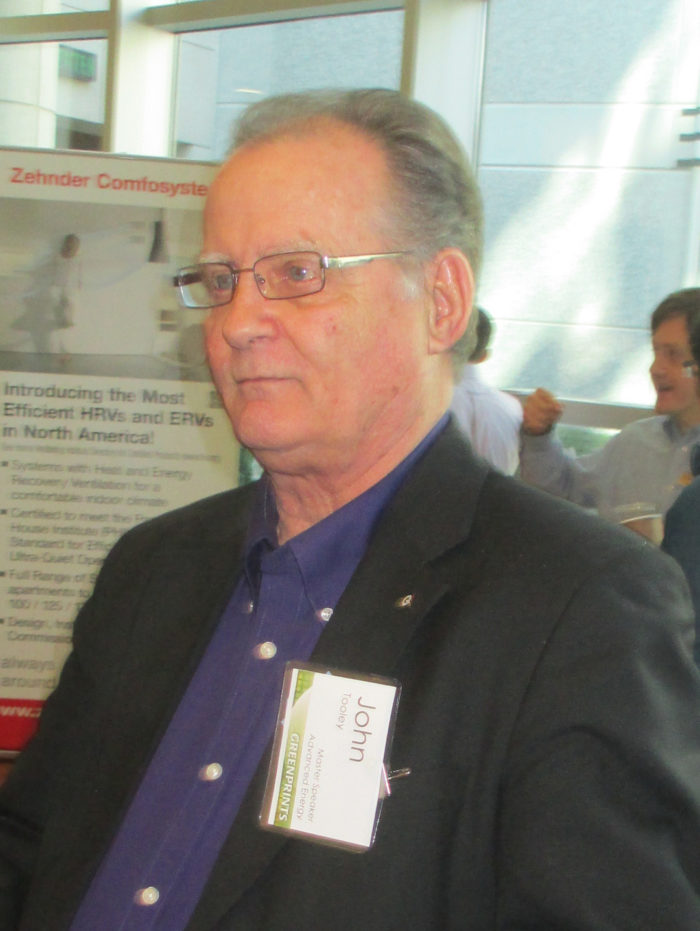
Image Credit: Martin Holladay
There are lots of reasons to attend conferences. At a good conference, we get a chance to network with colleagues, to learn about recent research, to see new products, and to talk with manufacturers’ reps. I’ve had the good fortune, over the last six weeks, to attend three conferences focusing on green building and residential energy:
- The Better Buildings By Design conference (sponsored by Efficiency Vermont) was held in Burlington, Vermont, on February 6 and 7, 2013.
- The Building Energy 13 conference (sponsored by NESEA) was held in Boston on March 6 and 7, 2013.
- The Greenprints conference (sponsored by Southface Energy Institute) was held in Atlanta on March 13 and 14, 2013.
It would be a daunting task to report on all of the excellent presentations I attended at these three conferences. While I hope to report in depth on some of the presentations in coming months, I’ve decided (as a stopgap measure) to share a collection of pithy quotes gleaned from all three conferences.
Building science
Bill Rose is a research architect at the Building Research Council at the University of Illinois, and the author of the landmark textbook, Water in Buildings. At the Boston conference, Rose said, “If you do something to the building envelope to make the exterior colder, it will be wetter. Cold means wet; warm means dry. This pertains to materials outboard of the thermal envelope, primarily during cold weather. At a given vapor pressure, chilled materials are wetter than warmed materials. This is an equilibrium condition. It is not a consequence of diffusion, air leakage, or drying potential to one side or the other.”
Green building programs
Carl Seville, the Green Building Curmudgeon, is a consultant based in Atlanta. At the Greenprints conference, Seville said, “The different green certification programs are essentially similar in concept. LEED has the most onerous documentation…
Weekly Newsletter
Get building science and energy efficiency advice, plus special offers, in your inbox.

This article is only available to GBA Prime Members
Sign up for a free trial and get instant access to this article as well as GBA’s complete library of premium articles and construction details.
Start Free TrialAlready a member? Log in





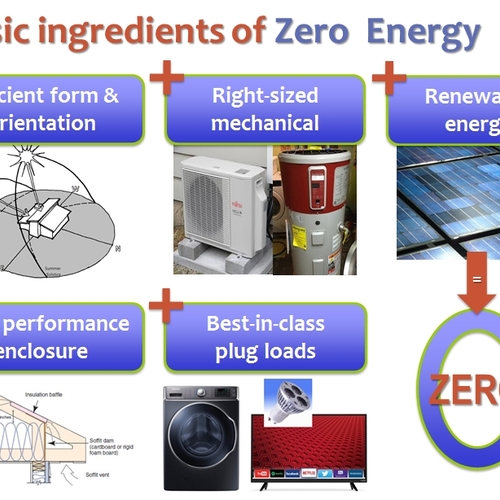
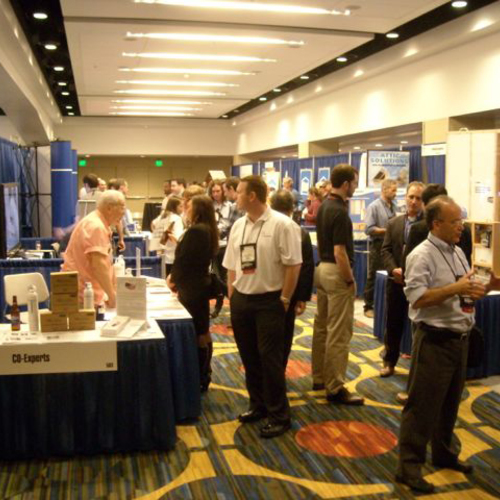
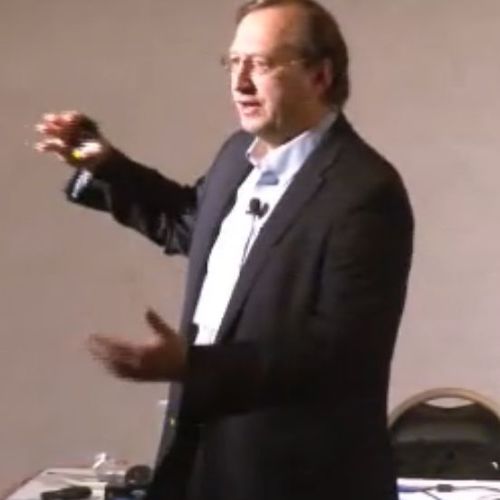
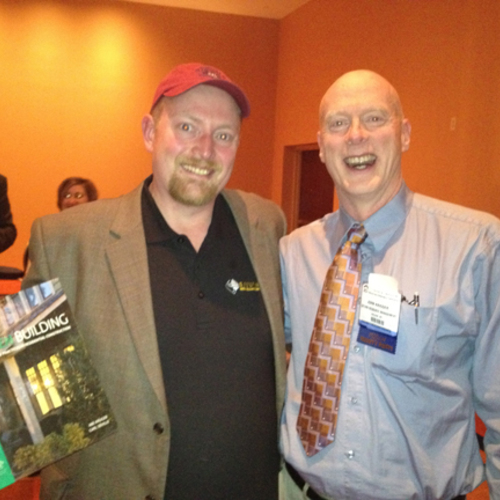






28 Comments
Very nice collection sifu
Very nice collection sifu Martin ... "fait reflechir longuement sur certains sujets "
The experienced views of the wisest/leaders is usually priceless to a n00b such as myself.
But where are the quotes from yourself Martin ??? :p
Further explanation of green roofs?
I don't get it. I also don't much get the difference between sensible heat and latent heat, which I'm sure is my main stumbling block in understanding why green roofs fail to reduce heat islands. My up-front thanks to anyone who's got a moment of time to spare.
Response to Jonathan Teller-Elsberg
Jonathan,
Here is a link to a web page that does a pretty good job of explaining latent and sensible heat: Latent and sensible heat.
Before I try to explain Art Rosenfeld's point -- a point that Art explained to Rob Watson, and Rob Watson shared at the Greenprints conference, and I reported here -- I'd like to get more information from either Art Rosenfeld or Rob Watson. I have sent e-mails to both Art and Rob asking them to respond.
Response to Jin Kazama
Jin,
When I attend a conference presentation, and I'm sitting in the audience, I attend as a journalist.
When I am on stage, however, I cease being a journalist. Someone else has to take notes and do the reporting.
PH?
Did you attend any of the workshops with a Passive House focus at BE, Martin? Seems like the conference had a pretty strong PH/PGH split this year.
I hope someone did take some notes of your remarks at the closing session - you had some great lines. Something about climate change leading to millenarian religious cults or equally cheery. I knew there was a reason I liked you.
Response to Dan Kolbert
Dan,
There are always overlapping presentations at these conferences, so it's impossible to be everywhere. I missed the Passivhaus sessions at the NESEA conference. (I was on stage myself three times at NESEA, so I was running around in circles.)
The panel discussion was supposed to include our predictions of the future. As you might imagine, I don't think we are likely to avoid a continuing rise in global temperatures, so I said something like, "Examples of ecological collapse — dying forests, disappearing glaciers, and species going extinct — will be unsettling. Some people will conclude that we are living in end times. This may give rise to new religious movements, and the consequences of such movements are difficult to predict."
People need to get a grip and
People need to get a grip and understand that we cannot keep all current species of animals alive for all of "gaiia's" life time, as all previous species have lived, mutated and gone extincts. And i can assure that glaciers are going to melt at one time in the future unless we move the earth out of its current orbit to another solar system, like it or not.
Even with the regulatory moves to "greener" times and the technological pushes, the stupidity of most of mankind will probably still negates most efforts in the long run.
so let's start a new religion now !! must be fun !!
OK, Martin
I like my version better.
And Jin, you're a curious fellow.
Thanks for the nice recap!
Wonder how Blasnik and Straube got along, Blasnik claiming no savings from right sizing equipment and Straube making this statement:
John Straube: “Energy Star builders in New York state are building really good houses but getting comfort complaints because their equipment is too big. Once you get a good skin, the mechanicals can only screw you up by making the house energy intensive and hurting comfort.”
(Blasnik making so many really good statements, glad I found one to take exception to.)
well Dan,i'll take that as
well Dan,i'll take that as positively curious !! :)
i like this one :
Michael Blasnik: “Window replacement has a 100- to 300-year payback.”
John Straube: “We have seen people buy windows from across the ocean, at high cost, for a very small incremental improvement in thermal performance. They should just add another kilowatt of PV, rather than chase after the very small incremental savings from the expensive windows.”
thin ice, marc
‘How do I sell my message to the NASCAR fan?’ Whoa there. That one was a low blow, and won't win many friends. Easy, y'all.
Second response to Jonathan Teller-Elsberg
Jonathan,
Mike Eliason (in a tweet) has published a link to a presentation by Art Rosenfeld on white roofs:
http://www.globalcoolcities.org/wp-content/uploads/2011/09/Rosenfeld-Presentation.pdf
Here is the context of the discussion: Rosenfeld is comparing white roofs to vegetated roofs; he is interested in comparing the effects of these two types of roofs on global warming, not energy use.
So there are several issues in this thread:
- One issue is the effect of a white roof on building energy use. (Answer: not much if the building is well insulated, but such a roof can result in savings if the building is located in a hot climate and is poorly insulated).
- Another issue is the effect of a white roof on global temperatures. (Rosenfeld provides estimates that the effect could be significant if every roof were white.)
- A third issue is the effect of a vegetated roof on global temperatures. (According to Rosenfeld, a vegetated roof is much less effective at reducing global temperatures than a white roof.)
The idea behind a white roof is to act like fresh snow. You want to reflect incoming sunlight and send the solar energy back out into space. (When this happens, the earth won't warm up as much as it does when the the sunlight hits a dark surface. That's why open ocean water adds to global warming when it is compared to sea ice.)
OK, that's the context. Here's what Rosenfeld wrote about the global cooling effect of vegetated roofs compared to the global cooling effect of white roofs:
“What about ‘Green’ (Vegetated) Roofs? ...
• Their albedo is only ~20%, so they absorb sunshine, get warm, and then cool by evapo-transpiration. The absorbed heat is trapped by the greenhouse effect and the cooling by evaporation is cancelled within hours or days by the condensation of the water vapor into rain.
• For global cooling they are only one-third as effective as white roofs.
• Their first cost is ~$15/sq. ft. and may need an irrigation system.
• I support them, but, as a 5% niche, they can be a distraction.”
Response to John Klingel
John,
The "NASCAR fan" statement was made by Alex Blumberg, not Marc Rosenbaum (as my article correctly notes).
I agree with you that Alex's stereotypical view of NASCAR fans may do a poor job of bridging the possible divide between National Public Radio listeners and those who remain skeptical that global warming is caused by human activity.
Response to Ted Kidd
Ted,
I have e-mailed John Straube, asking him to comment on your observation of an apparent contradiction between Straube's view of oversized heating systems and Blasnik's view of oversized heating systems. If he responds, I'll post his comments here.
I, too, would love to hear more
I agree with all of Mr. Blasinik's quotes, excluding only the statement, "right-sizing heating systems or air conditioners results in zero energy savings", to which I'd love more of the background context. Yes, I suppose that it CAN be true, and in many common installations it likely IS true. But to accept it at face value is something I can't do, based on my data and research of the unmentioned parts of the statement: System type (ducted or ductless), distribution system location, and airflow.
If oversized ducted equipment is installed in exactly the same method as right-sized (comparing apples to apples regarding delivery of the incremental amount of additional airflow, and ductwork of sufficient capacity to get that air back out of "dead-ended" rooms to maintain the same room air pressure standards of the right-sized version), and we are talking about doing all of this in an unconditioned attic, then the increased distribution system losses, coupled with the increased cyclic degradation, are too great to ignore.
Our average retrofit project in CA is to remove 4.8 tons of AC capacity from the attic of a 2,100 SF home and replace it with just 1.8 tons of fully ducted distribution in unconditioned space. Our savings data, and what we know is true regarding duct performance, definitely requires this additional clarification of the assumed part of the original statement.
Loved all of the quotes in one article, especially those from Professor Straube. Thanks Martin.
Response to Mike MacFarland
Mike,
Michael Blasnik bases his conclusions on research data. I'll send him an e-mail and ask him to respond to your comments. As far as I know, several researchers have looked at the results of swapping oversized HVAC equipment with right-sized equipment, and none have found significant energy savings from this measure.
While we await Michael's response, I'll address a few of your points.
Here's one question: Should an HVAC installer choose right-sized equipment or oversized equipment? I think that the answer is clear: choose right-sized equipment. For one thing, right-sized equipment usually costs less than oversized equipment.
Here's another question: If an existing house has ducts in an unconditioned attic, will right-sized equipment perform better or worse than oversized equipment? On this question, we do have data. A relevant study was performed in Florida by three researchers from the Florida Solar Energy Center (Jeffrey Sonne, Danny Parker, and Dan Shirey). I reported the results of the study in the May 2007 issue of Energy Design Update.
The surprising result of their study: when existing oversized air conditioners in Florida were replaced with right-sized equipment, the new equipment did not save any energy. Moreover, the right-sized equipment was less effective at dehumidification than the older oversized equipment.
Here are some quotes from my article:
Summarizing the results for the three houses with full data, the researchers wrote, “Monitored data from three case studies where oversized AC systems were replaced in Florida saw only one case where energy use was lower -- and this was in a system where high evaporator flow rates largely traded off moisture removal for sensible heat performance -- not appropriate in a hot humid climate. In the other two systems, energy use was clearly increased in one system and about the same in the other.” ...
The three FSEC researchers looked closely at the data to try to explain why the right-sized equipment performed poorly. Clearly, the right-sized equipment had longer run times than the oversized equipment; longer run times allow attic ducts to pick up more heat. Moreover, longer run times also provide more opportunities for humid outdoor air to enter leaky attic return ducts. As Danny Parker explained, “The smoking gun was the humidity situation. Moisture was being pumped into the space, and the condensate quantity was higher when the machine was running.”
As the paper notes, “The data from the Lakeland site revealed that the new [right-sized] air conditioner, with its higher evaporator air flow per unit cooling capacity, did a worse job at controlling interior moisture levels. … While it would be convenient to attribute this slightly higher interior humidity level to the higher coil air flow, the higher measured condensate removal in the post period, and pre and post dew points, suggest that somehow the moisture load was much greater with the new machine. Note that dew points were lower in the post-monitoring period by over three degrees. If a higher evaporator temperature and lower outdoor dew points were reducing the moisture being removed by the air conditioner, then we would expect to see lower moisture removal rates. In fact, we find just the opposite. … We see that the new air conditioner actually removed an average of 1.4 additional gallons of water each date after the unit was changed out. Given the lower outdoor dew point, this means that somehow an increased moisture load was being placed on the air conditioner. A likely explanation is that with the greater run time of the new air-conditioning system, return-side duct leakage and leakage from the air handler is placing additional load on the AC system. … Since previous FSEC research shows that the average air handler in Florida homes leaks 70 - 80 cfm during operation, … the air handler is drawing in additional outdoor air during the extended run times with the right-sized system. … With the properly sized system, the longer run times relate to greater volumes of attic air being drawn into the air handler, which results in the greater observed condensate removal. What is not as obvious is that the longer run times also are necessarily associated with greater heat gains from the duct system.”
Parker told EDU, “It turns out that the longer the machine runs, the more duct losses you have. And those losses are large -- they tend to be in the range of 20 percent. The duct losses are bigger than cycling losses. So even though right-sizing saves energy by reducing cycling losses, it goes the other way on the duct losses.”
Large Ducts Have Too Much Surface Area
Oversized ducts may also have contributed to the poor performance of right-sized equipment. The researchers wrote, “The longer run times of the smaller air-conditioning systems compared to the oversized systems mean increased duct air leakage penalties, and since cold air is flowing through the ducts for longer periods, heat conduction through the ductwork is also increased. Also, since the ductwork size was not reduced when the properly sized systems were installed, the same duct surface area that was present for the oversized system now has cold air flowing through it for longer periods. The relatively large duct work may also explain why the properly sized AC systems all had higher airflow rates per ton of cooling than the original systems, which may in turn partially explain higher post-change-out RH levels.”
Bad Ducts Trump Efficient Air Conditioners
The FSEC report provides a strong argument in favor of installing duct systems inside a home’s conditioned space. “Most attic air handlers suck in air,” says Parker. “That’s why sealing ducts is hugely important.” Most attic duct systems are so leaky and poorly insulated that duct performance issues overshadow any improvement in air conditioner performance. The researchers wrote, “Downsized machines with the duct systems located in attics may see that increases in duct losses substantially exceed the savings in increased air-conditioning system part load performance.”
The FSEC research raises an important question: if “right-sized” equipment uses more energy and performs worse than oversized equipment, is it really right-sized? “These findings basically indicate that there is a theoretical optimal size for air conditioners with duct systems that are not in the conditioned space, and that the optimal size is bigger than you would conclude from using Manual J,” Parker told EDU. “The problem with Manual J is that it doesn’t assume that the duct losses vary with the size of the air conditioner. To perform the sizing calculation, you must find a solution that keeps revising itself -- it’s a problem with an iterative solution.”
Response to Martin
Thanks Martin for that additional information, to which I also agree. I also realize that Michael Blasinik's information is based on research data, and the research data further illustrates my exception to the statement, and without my exception, I again agree with Michael's statement.
I just want to go back to my statement and again make clear to the readers that it is when you downsize only the equipment, and not the full system (equipment plus ducts), that there isn't any energy saved. When you right size ducts and right size equipment at the same time, you save energy. And when you put them in correctly (as only a member of the ring4club.com would do- leak free), you are saving energy too. But apples to apples, leaky to leaky, the issue is with the volume of air you would have to deliver in a true comparison between different sized systems installed with the same tolerances and specifications (duct airflow FPM), and then get back out of those places into the return plenum. The research mentions this, but they didn't appear to test it.
Thanks again Martin. I'm looking forward to hearing from Michael as well, and hope that he reads this as well to further understand my reason for taking issue with just one of his points. And as it sounds like the context of his point was in simply downsizing equipment and not right sizing distribution systems along with it (which always needs to be done- what kind of hack would call himself a home performance contractor and NOT replace the system too- and/or allow the new system to leak*?!), I also fully agree him, and we have no argument at all.
Mike
* tongue-in-cheek statement. We all know that's what the majority of the HVAC companies who are now selling themselves as HP contractors do (or more appropriately, don't do) within rebate programs. But of course it doesn't work, heck, the research shows it doesn't work, the science shows it can't work, and then they wonder why their delivered savings promises look nothing like the post utility bill data?!
right sizing
Martin did a very thorough job of summarizing the FSEC work. There was also a study in Wisconsin by ECW -- see http://www.focusonenergy.com/files/Document_Management_System/Evaluation/centralairconditioning_report.pdf Part of that report closely monitored two homes and swapped air conditioners of different sizes (2 ton and 3 ton) and found identical energy use at one site and small savings at the other which was not statistically significantly different from zero. The results in terms of humidity control were also mixed.
In addition, there was an article in Home Energy by John Proctor in 2010 that re-visited the sizing issue for air conditioners see http://www.homeenergy.org/show/article/id/681 which has a byline of "A mountain of data leads to an unusual conclusion - sometimes bigger is not so bad". The full article is behind their pay wall but basically summarizes research indicating that right sizing may not lead to much, if any, energy savings. It sums up with "We cannot justify reducing the size of air conditioners by energy savings alone"
Modern air conditioners have very low cycling losses -- the median system coefficient of degradation was 0.07 in 2009, indicating maximum system cycling losses of 3.5% and very small savings potential from typical downsizing. In steady state, duct losses tend to be larger for smaller sized systems due to increased run time (as Martin mentioned), which can negate these small potential cycling loss savings. For the typical changes in furnace or AC sizing from 'right sizing" (e.g., one or two steps down), there really isn't evidence of measurable energy savings.
I'm not so sure how well these findings apply to much more dramatic changes -- like going from 5 tons to 1.5 tons and also fixing the house and the distribution system. I certainly believe there can be more complicated interactions and dynamic effects -- i just haven't seen any hard data to back this up. I'd love to see such data -- especially data that can disentangle the effects of sizing from the other pieces.
I'm certainly not advocating over-sizing of equipment -- there are many reasons to use the smallest equipment you can that meets the needs of the home such as lower equipment cost, less likely that ducts are undersized (may lower power draw of ECM blowers), better chance of good humidity control in hot humid climates, maybe better comfort, noise, and equipment longevity. It's just that large energy savings from standard "right sizing" haven't materialized in the way people have claimed/thought.
reply to Mike MacFarland
Mike-
I didn't see you comment when i posted mine. I think we may be in agreement -- my comment was limited to typical "right sizing" approaches. As I mentioned in my comment, I don't know how the findings in typical right sizing scenarios relate to cases where the ducts and building are also dramatically changed. I'm looking for the data -- especially from large scale implementations.
I'm also curious about the cost of doing this work . I would think that replacing an HVAC system and the entire duct system would be quite expensive -- so I'm thinking this either happens during major remodeling or there are goals more significant than just reducing heating and cooling costs.
Reply to MIchael Blasinik
Hi Michael,
Thanks for your responses and the additional information. As you said, we are now in agreement.
My HP company is a bit unique in that we study the delivered performance of existing systems prior to removal, and then data log and study delivered performance of our new systems. In doing so, we have learned tremendously what works and what doesn't (feedback loop). In addition, every project we've done goes into a tracking worksheet, so we can study the actual delivered savings versus promised or modeled savings. I say this just to illustrate that we are all about data gathering and analysis, and not about modeling or popular beliefs.
Our approach to studying equipment performance is through spreadsheet Psychrometric analysis and wireless data gathering at each supply and return outlet, and with accurate flow rates, calculating a minute by minute performance snapshot of delivered BTU's and comparison to those available at the coil. Ive coined this system our "HVAC Dynamometer", or DYNO for short. With this information, and the data on the length and size of each duct run, we can easily evaluate the actual R value of each duct run, and things like BtuH/foot loss of each duct installation. This type of information helps us get better at designing distribution systems which can be installed in unconditioned spaces but nearly emulate those installed in more preferable locations.
The project costs aren't inexpensive, as you asked, but here's a good article by the local paper which illustrates how cost effective this approach is, and the importance of using building science and building performance test equipment to fix homes: http://www.mtshastanews.com/article/20130130/LIFESTYLE/130139961/1017/LIFESTYLE?rssfeed=true
Always a pleasure.
Mike
MH presentation
Martin,
For those of us not able to attend, is there a link to your presentation "why we can't build our way out of climate damage"? I realize its not fair to ask for a summarization since you appear to have given a 2 hour presentation. I'd like to hear your points if there's a reasonable way to do it.
Right-sizing equipment
With all the comments in this thread about over-sized equipment, right-sizing equipment etc. and that there are no significant energy savings associated with right-sizing or down-sizing equipment one specific aspect has not been mentioned but which I believe should not be disregarded. The energy savings referred to are those expected in the future on an individual, personal level. Nothing wrong with that but there is also the global aspect and the "past" time dimension. Every product that we buy comes with its embodied energy from the raw materials, manufacturing process, transportation etc. Through buying a product or equipment that is not oversized but of just the right size for its intended purpose we can have an impact on the marketplace. Bigger, more powerful equipment doesn't sell as well any more over time? The market will respond by expanding the offerings in the smaller categories. And this will translate into future energy savings on a more global level for a better future of our planet, but eventually on the individual, personal level as well with the associated monetary savings.
From personal experience as a consumer and soon-to-be home owner I know that it is not always easy to make your point and insist on getting what you know is sufficient to do a given job. Why should I buy a 4.5-ton heat pump when all the energy simulations and analysis show that a 3-ton is perfectly adequate? Because that is what the contractor wants me to, what he sells most, and why is that one the most frequently sold unit, because that is what they recommend and too few people are asking more questions.
NGBS correction
Carl, I think you overestimated NAHB. The 2012 NGBS references the 2009 IECC. It would have been logical for it to reference its calendar counterpart, but...
At least LEED is (allegedly) getting updated in 3 months. The NGBS just published their update.
Not trying to defend any particular program. I'm just pointing out the various chronological markers.
Response to Albert Rooks
Albert,
Q. "Is there a link to your presentation, 'We can't build our way out of the climate mess'?"
A. Not yet. But I think that Southface Energy Institute will eventually post the PowerPoint presentations on their website. If that happens, I'll post a link here.
Response to Manfred Winter
Manfred,
Q. "Why should I buy a 4.5-ton heat pump when all the energy simulations and analysis show that a 3-ton is perfectly adequate?"
A. You shouldn't. Neither Michael Blasnik nor I am arguing that you should. That's why I wrote (in comment #16), "Choose right-sized equipment. ... Right-sized equipment usually costs less than oversized equipment."
Michael Blasnik was talking about retrofit work. Clearly, it makes no sense to swap out an oversized piece of HVAC equipment for a right-sized unit if there are no energy savings. Just like you say, that would be a waste of materials, since "every product that we buy comes with its embodied energy from the raw materials, manufacturing process, transportation etc."
I think we all agree on that point.
Response to Mike Collignon
Mike - Regarding your comment about the NGBS, the point I was trying to make was that while the standard references the 2009 IECC, the program aims to meet the performance of the 2012 IECC by targeting at least 15% better performance than 2009. Both the performance and the prescriptive paths aim for this minimum performance level, although we all know that these are just estimates and the quality of the work in the field and owner behavior have a lot of influence on how much energy is ultimately used.
Second response to Ted Kidd
Ted,
You wrote, "Wonder how Blasnik and Straube got along, Blasnik claiming no savings from right sizing equipment and Straube making this statement: 'Energy Star builders in New York state are building really good houses but getting comfort complaints because their equipment is too big. Once you get a good skin, the mechanicals can only screw you up by making the house energy intensive and hurting comfort.'”
John Straube sent me an e-mailed response today. John Straube wrote, "I don't understand the confusion. Blasnik was talking about energy savings. I have no reason to disagree (within reason). But I was talking about comfort, and I think your quote caught that well -- short cycling of furnaces to be precise in the example I gave. I have no evidence that this is a major energy use issue and did not say this was so, but it is becoming a comfort issue for houses with furnaces sized something like twice design loads, on cold and especially sunny days that are not close to design temperatures."
Another response to Albert Rooks
Albert,
Yes -- there is now a link to my Greenprints presentation. You can find it here:
We Can't Build Our Way Out of Our Climate Mess
The PowerPoint slides from other Greenprints presentations are available on this page:
Greenprints Conference Presentations
Log in or become a member to post a comment.
Sign up Log in